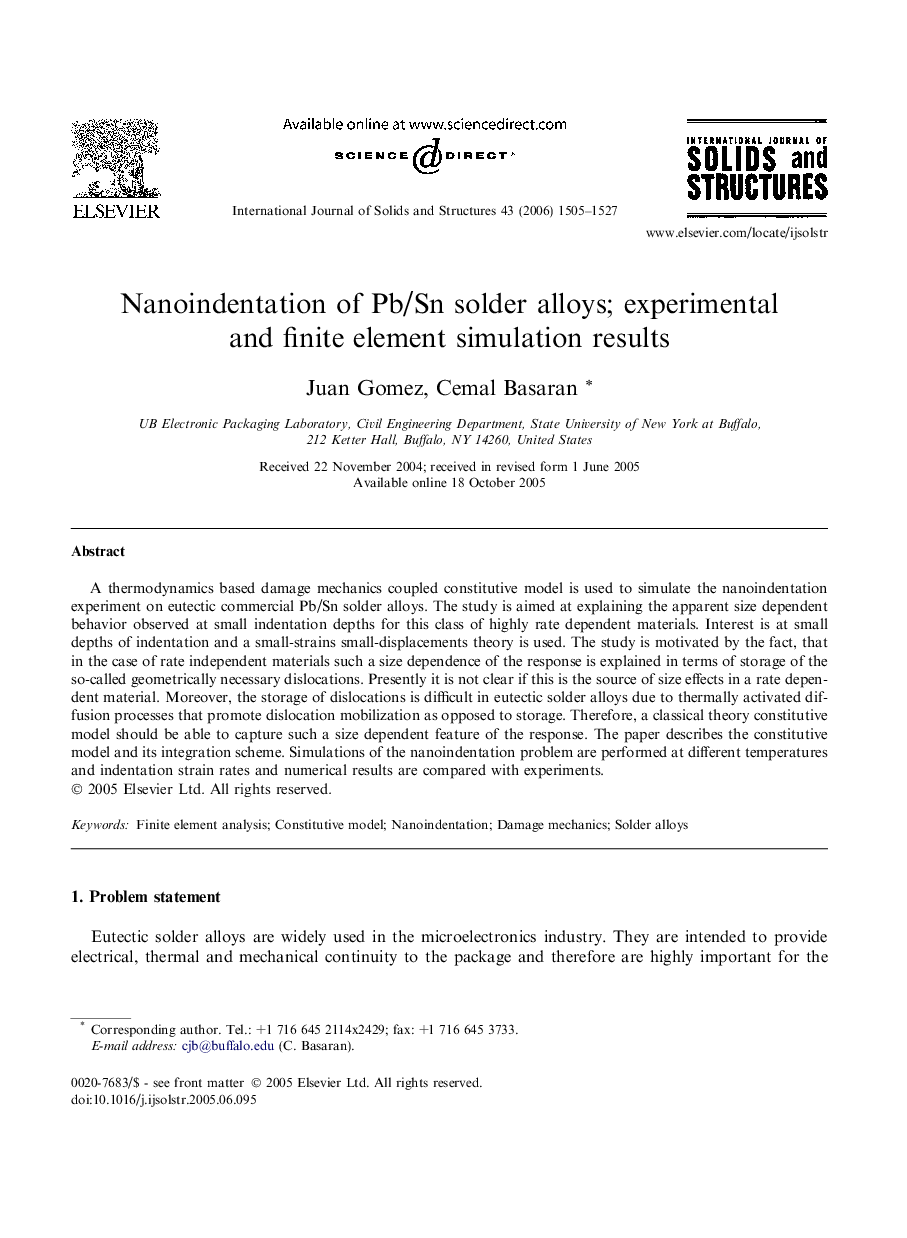| کد مقاله | کد نشریه | سال انتشار | مقاله انگلیسی | نسخه تمام متن |
|---|---|---|---|---|
| 280924 | 1430396 | 2006 | 23 صفحه PDF | دانلود رایگان |

A thermodynamics based damage mechanics coupled constitutive model is used to simulate the nanoindentation experiment on eutectic commercial Pb/Sn solder alloys. The study is aimed at explaining the apparent size dependent behavior observed at small indentation depths for this class of highly rate dependent materials. Interest is at small depths of indentation and a small-strains small-displacements theory is used. The study is motivated by the fact, that in the case of rate independent materials such a size dependence of the response is explained in terms of storage of the so-called geometrically necessary dislocations. Presently it is not clear if this is the source of size effects in a rate dependent material. Moreover, the storage of dislocations is difficult in eutectic solder alloys due to thermally activated diffusion processes that promote dislocation mobilization as opposed to storage. Therefore, a classical theory constitutive model should be able to capture such a size dependent feature of the response. The paper describes the constitutive model and its integration scheme. Simulations of the nanoindentation problem are performed at different temperatures and indentation strain rates and numerical results are compared with experiments.
Journal: International Journal of Solids and Structures - Volume 43, Issue 6, March 2006, Pages 1505–1527